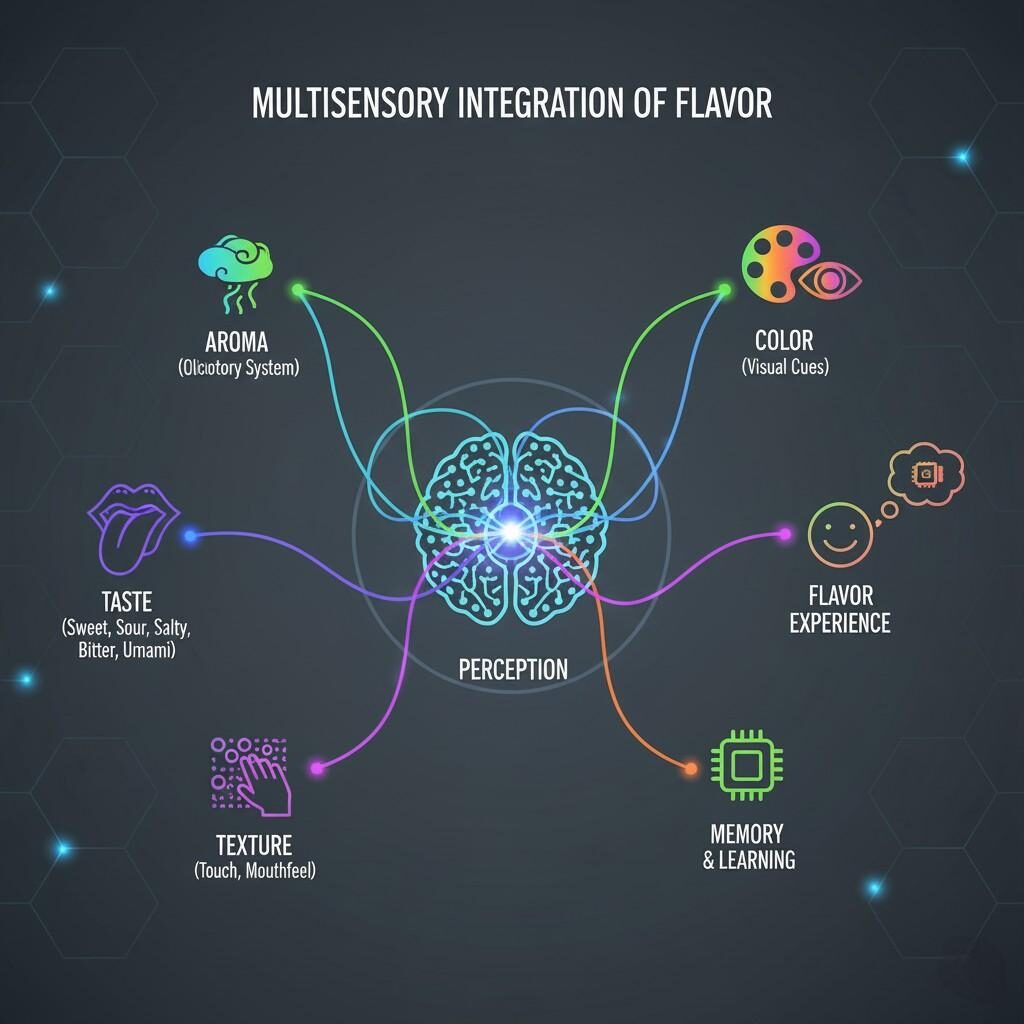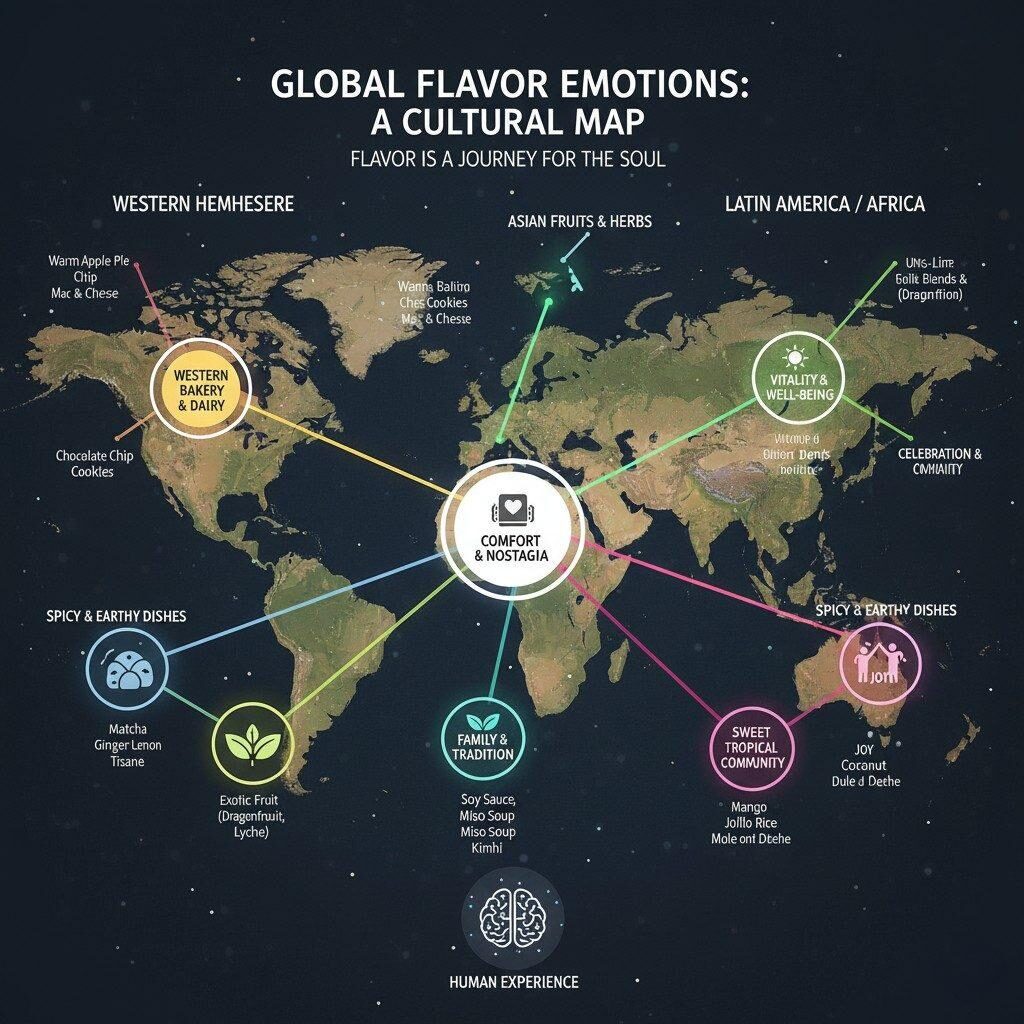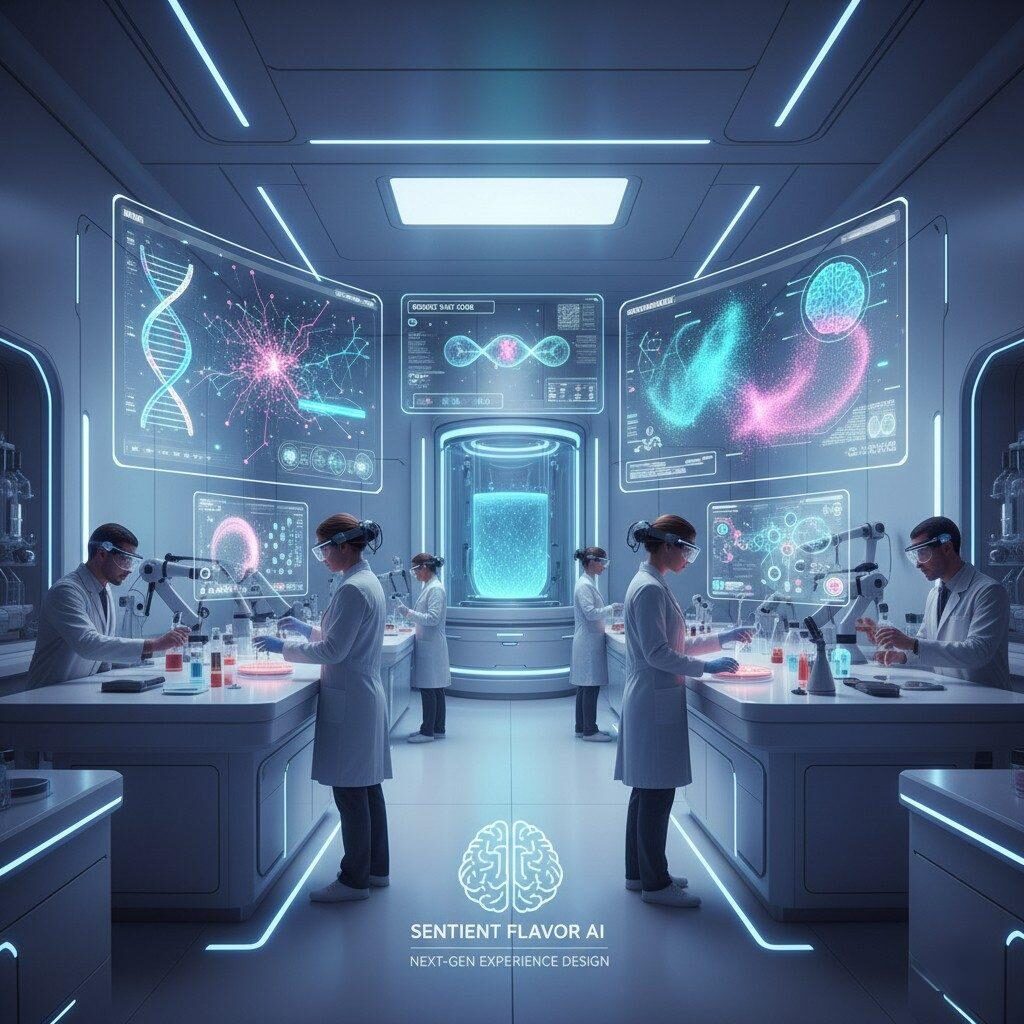Author: R&D Team, CUIGUAI Flavoring
Published by: Guangdong Unique Flavor Co., Ltd.
Last Updated: Oct 18, 2025

Multisensory Food Lab
In today’s hyper-competitive market, consumers no longer buy flavors—they buy experiences. This evolution has given rise to what many industry experts now call the Flavor Experience Economy. Similar to the “Experience Economy” described by Pine and Gilmore (Harvard Business Review, 1998), the modern flavor industry is shifting from mere sensory satisfaction to emotional immersion. Consumers want to feel, connect, and remember through taste.
In this landscape, food and beverage brands must go beyond simply developing delicious flavors. They must craft immersive, story-driven taste experiences—flavors that evoke memories, emotions, and even identities. For flavor manufacturers and product developers, this means integrating sensory science, emotion design, and technological innovation to create flavor systems that resonate deeply with consumer expectations.
This blog explores how businesses can design immersive flavor experiences, how technology and psychology shape taste perception, and how manufacturers like CUIGUAI Flavoring are leading the next frontier in flavor innovation.
The term “Experience Economy” originally referred to businesses that engage customers through memorable experiences rather than simply providing goods or services. In flavor innovation, this translates into creating multisensory taste experiences that evoke specific emotions, places, or cultural memories.
Consumers today don’t just want a drink that tastes good—they want one that feels good. This shift is driven by growing awareness of the emotional and cognitive dimensions of food. Research from the Institute of Food Technologists (IFT) shows that emotions play a significant role in flavor preference, especially among younger consumers who associate flavor with lifestyle and self-expression (IFT, 2023).
A flavor that evokes nostalgia—like freshly baked vanilla cupcakes—or conveys adventure—like tropical fruit blends—does more than please the palate. It creates an emotional anchor that strengthens brand loyalty and enhances perceived product value.
Incorporating experience-based flavor design can yield measurable business benefits:
A Deloitte Insights report (2024) notes that brands integrating sensory storytelling in their food and beverage products saw a 20–40% increase in engagement compared to those emphasizing functional benefits alone.

Multisensory Flavor Integration Diagram
To create an immersive flavor experience, one must first understand the science of taste perception. Flavor is not a single sense—it is a multisensory construct involving taste, smell, sight, sound, and even touch.
Flavor perception arises when multiple sensory signals combine in the brain’s orbitofrontal cortex. The core components include:
For example, research from Oxford University’s Crossmodal Research Laboratory shows that sound can affect the perceived sweetness or bitterness of a flavor. A higher-pitched tone enhances sweetness perception, while lower tones amplify bitterness (Spence et al., 2019).
This illustrates the principle of crossmodal correspondence, where sensory cues interact to shape overall experience. For flavor designers, the implication is clear: immersive flavor design must orchestrate all sensory elements in harmony.
Among all sensory factors, aroma has the strongest link to memory and emotion. According to the National Institutes of Health (NIH), olfactory signals are processed directly by the brain’s limbic system—home to emotion and memory regulation (NIH, 2022). This is why a familiar scent can instantly evoke childhood memories or emotional responses.
For manufacturers, crafting signature aroma profiles is crucial. These profiles not only define product identity but also create emotional associations that drive repeat purchases. For instance, a signature “caramel latte” note can instantly remind consumers of cozy cafés, while a “fresh citrus zest” evokes vitality and freshness.

Global Flavor Emotions Map
Creating an immersive flavor experience requires understanding the cultural, emotional, and social contexts in which consumers interpret taste.
Brands can apply emotional mapping to align flavor profiles with target emotions. For example:
| Emotion | Flavor Profile | Example Applications |
| Comfort | Vanilla, milk, caramel | Bakery, dairy, tea |
| Excitement | Tropical fruits, citrus, spice | Energy drinks, confections |
| Relaxation | Lavender, green tea, honey | Functional beverages |
| Nostalgia | Butter, brown sugar, cinnamon | Baked goods, desserts |
This alignment helps product developers connect emotionally with consumers and differentiate in crowded markets.
Cultural factors strongly shape taste preferences. For example:
Global manufacturers must localize not just flavor formulations but also sensory storytelling to match regional identity.
As global food culture blends, consumers seek both familiarity and exploration. This is where the hybrid flavor trend thrives—merging multiple cultural identities into one experience. “Matcha cheesecake” or “spicy chocolate” represent this evolution.
Flavor houses like CUIGUAI Flavoring leverage cross-cultural R&D to create balanced profiles that appeal to global markets while respecting local sensory codes.
Digital transformation is revolutionizing flavor development. Using AI-powered flavor databases, chemometric analysis, and GC–MS (Gas Chromatography–Mass Spectrometry) data, companies can map aroma molecules to sensory outcomes.
This allows developers to predict how molecular combinations translate into consumer-perceived experiences. AI tools can even generate prototypes of flavor concepts before physical trials, reducing R&D costs and time.
For instance, advanced AI algorithms can identify synergistic aroma pairs—such as lactones and esters—that enhance perceived fruitiness or creaminess without increasing concentration levels.
Some brands are experimenting with VR flavor testing environments that simulate consumption scenarios—cafés, beaches, or festive events—allowing researchers to measure emotional response in real time. According to MIT Media Lab studies, immersive testing environments improve accuracy in predicting market success by aligning context with perception (MIT, 2023).
Immersive flavor experiences are not only about pleasure—they increasingly include purpose. Consumers value brands that integrate sustainability and health into sensory design.
Innovations such as bio-based flavor compounds, low-sugar enhancers, and probiotic-inspired aroma molecules represent the future of ethical experience design—flavors that taste good and do good.
CUIGUAI Flavoring, for example, integrates sustainability by using food-grade renewable sources and eco-optimized synthesis to ensure both sensory quality and environmental responsibility.

AI Flavor Lab
The next frontier is personalized flavor experiences—tailoring products based on genetic taste profiles, emotional states, or consumption habits. Wearable biosensors and emotion AI could one day customize beverage flavors dynamically, matching mood and context.
As the Experience Economy deepens, brands will invest more in flavor storytelling—using narrative-driven flavors to embody brand values. For example:
Flavor becomes not just an ingredient but a medium of communication—a way for brands to speak through the senses.
Future flavor innovation will blend scientific precision with creative artistry. Chemists, sensory scientists, and culinary artists will work side by side to craft “emotive molecules”—compounds designed to elicit specific emotional responses. This convergence will redefine what it means to experience taste.
The Flavor Experience Economy represents a new paradigm—where flavor is no longer a function, but an emotionally immersive journey.
From multisensory integration and AI-driven development to cultural storytelling and sustainability, the industry is moving toward a future where flavor connects consumers to deeper meaning, memory, and mindfulness.
For manufacturers and food innovators, this is an invitation to evolve—to create flavors that touch hearts as much as they please palates.
At CUIGUAI Flavoring, we specialize in crafting high-quality, food-grade flavors that transform ordinary products into extraordinary experiences.
Whether you are developing beverages, snacks, or functional foods, our R&D team can help you design flavors that resonate emotionally and perform technically.
For technical exchange or to request free flavor samples, reach out to our team . Let’s build the future of flavor together.
📩 [info@cuiguai.com]
📞 [+86 189 2926 7983]
🌐 Explore more at 【www.cuiguai.cn】
Copyright © 2025 Guangdong Unique Flavor Co., Ltd. All Rights Reserved.